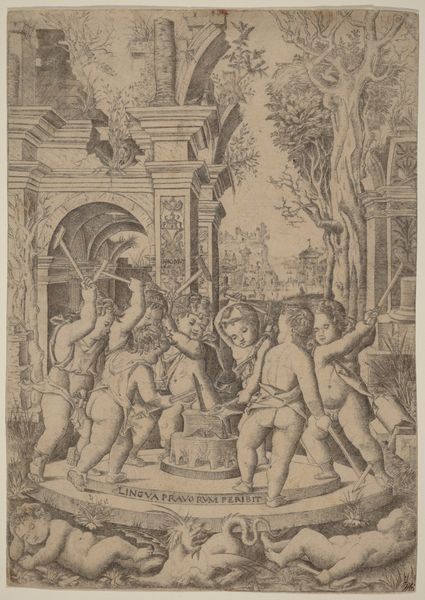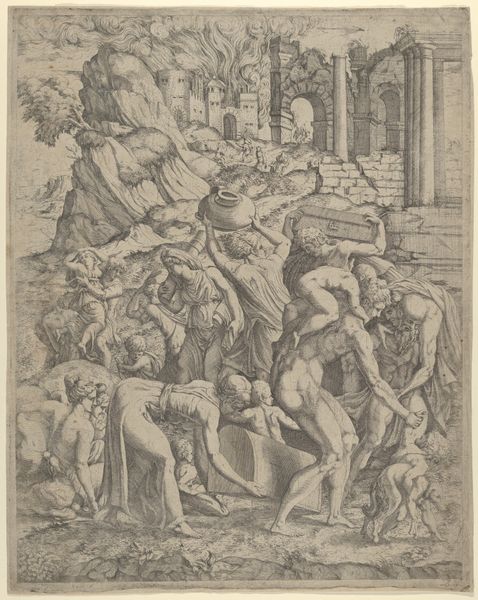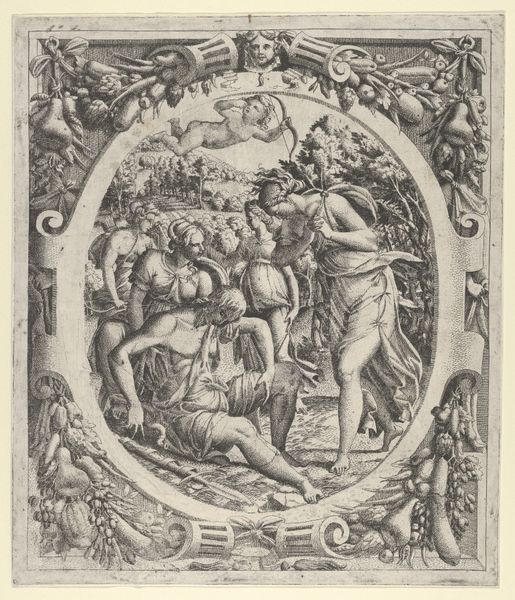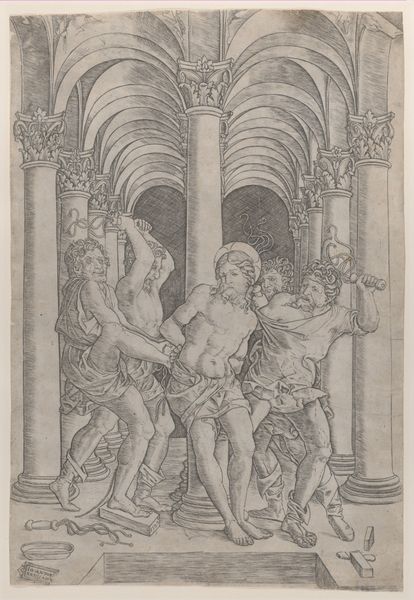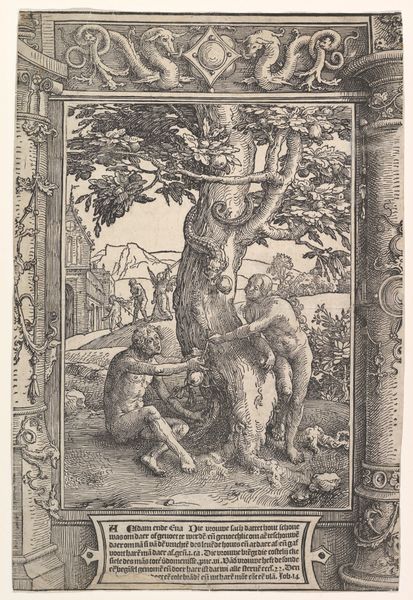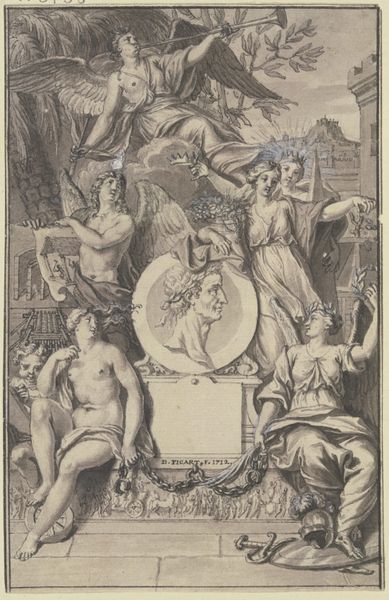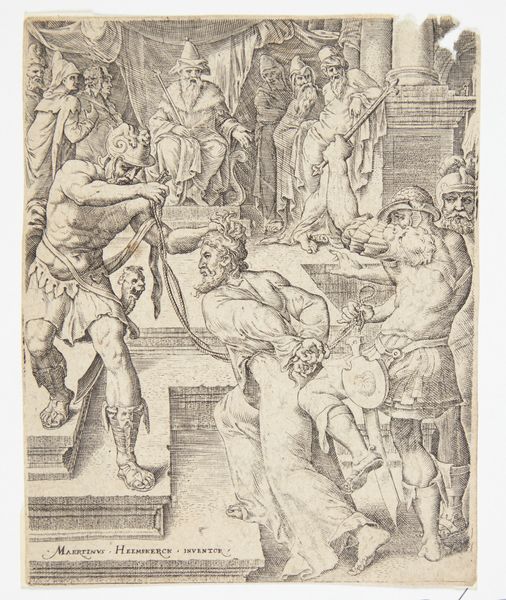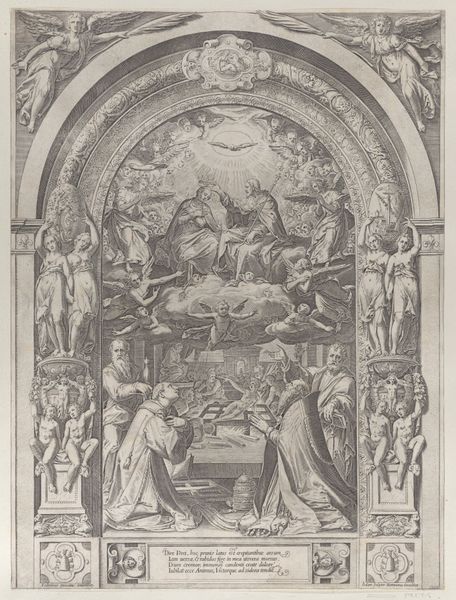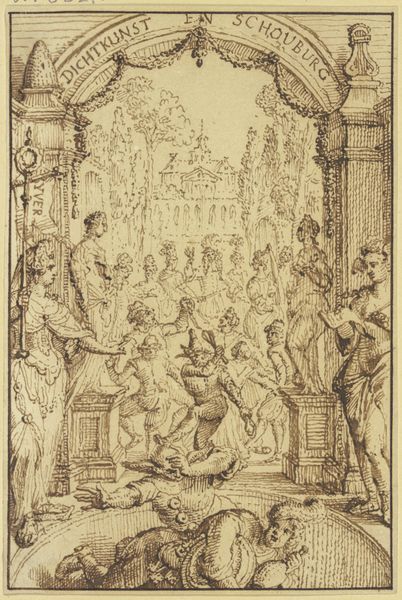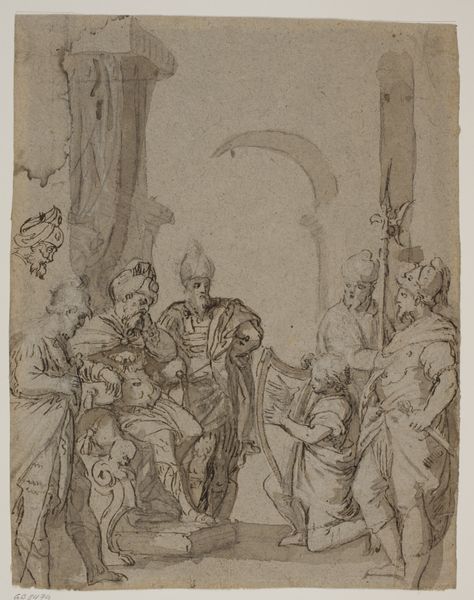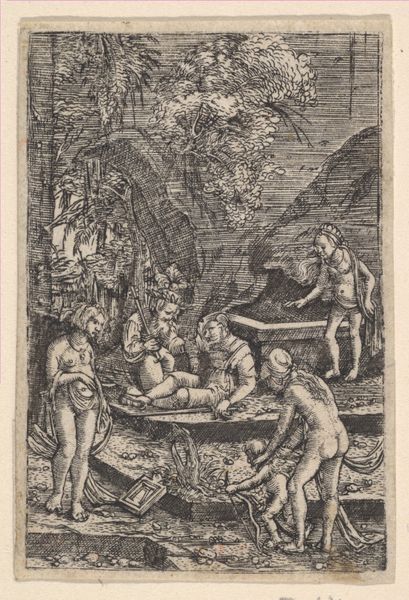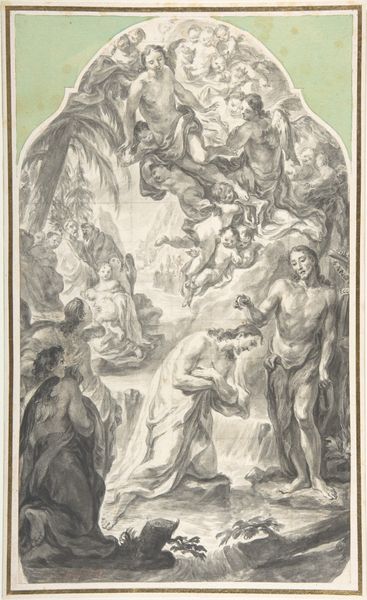
The fate of an evil tongue; seven putti stand around an anvil on which they hammer a tongue, landscape and architecture behind 1502 - 1512
0:00
0:00
drawing, print, intaglio, engraving
#
drawing
#
allegory
#
pen drawing
# print
#
intaglio
#
landscape
#
figuration
#
italian-renaissance
#
engraving
Dimensions: Sheet: 11 7/16 x 8 1/8 in. (29.1 x 20.6 cm)
Copyright: Public Domain
Nicoletto da Modena created this engraving called "The Fate of an Evil Tongue" sometime between 1500 and 1520. It shows seven putti hammering a tongue on an anvil and is an allegory about the consequences of wicked speech. This print reflects the social anxieties around slander and libel in early sixteenth-century Italy. The image creates meaning through classical visual codes. The putti, derived from classical art, add a layer of authority to the scene. The crumbling architecture suggests the inevitable decay that awaits those who engage in evil speech. During this time, the printing press made it easier to spread both information and misinformation, and was regulated by governing institutions. This print likely reflects a conservative desire to reinforce social norms around acceptable speech. By studying legal and social documents from the time, we can better understand the artist’s intentions and the artwork’s meaning as contingent on its historical context.
Comments
No comments
Be the first to comment and join the conversation on the ultimate creative platform.
